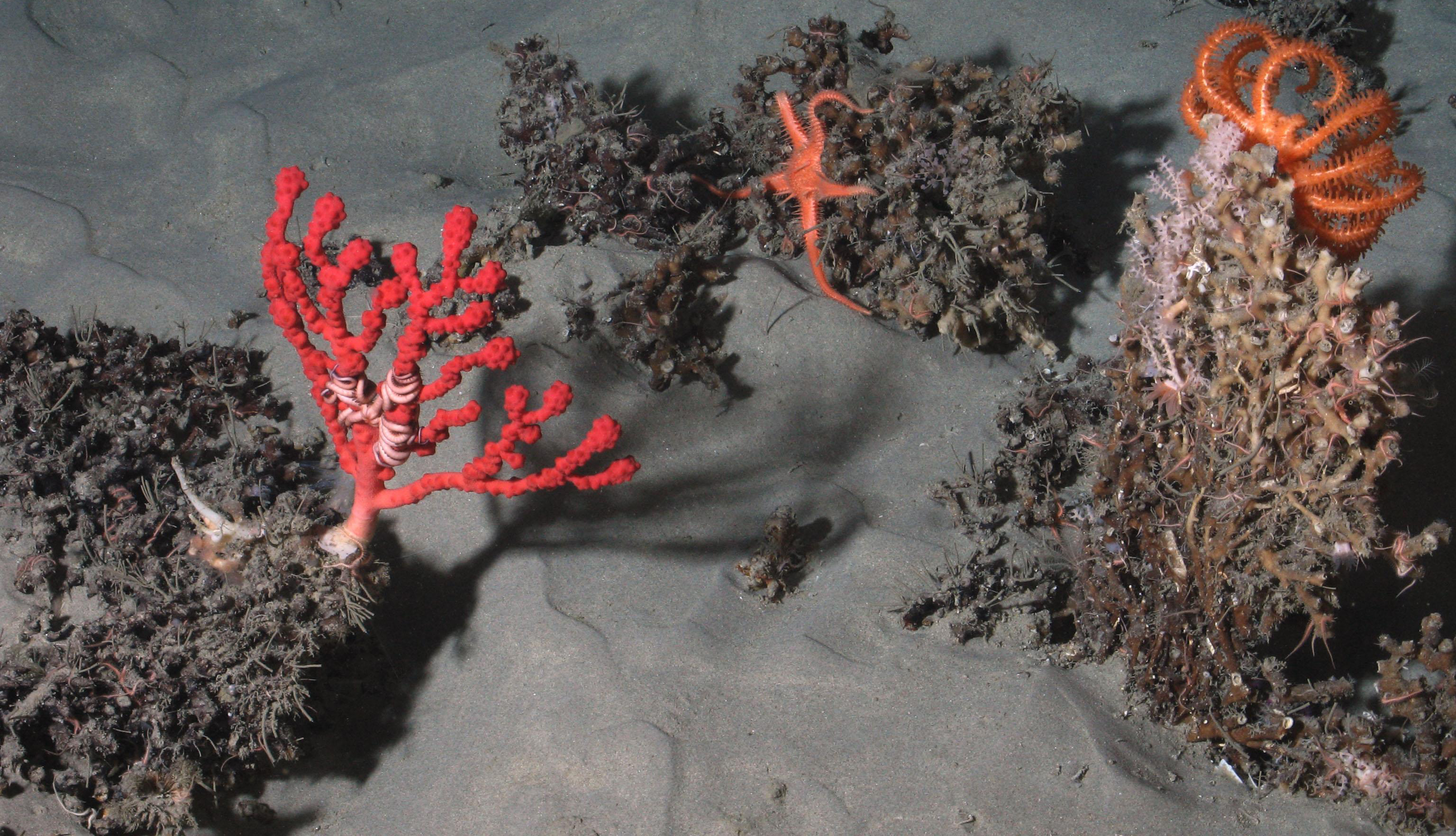The continental margin of the northern Bay of Biscay is divided into the Celtic and Armorican margins, which are both characterised by a relatively broad continental shelf and a steep, canyon-dominated, slope. Historical data on the occurrences of frame-building scleractinian cold-water corals, antipatharians, gorgonians and large sponges in the Bay of Biscay has mainly come from fisheries surveys. More recent studies confirmed the occurrence of cold-water coral habitats, at the boundary between the Eastern North Atlantic Central Water (ENACW) and the Mediterranean Outflow Water (MOW). The distribution of Lophelia pertusa and Madrepora oculata is skewed towards the northern half of the Bay. The two reef-building species co-occur in reefs of the Bay of Biscay but show different genetic and historical patterns in the Northeast Atlantic. Populations of L. pertusa are genetically homogeneous from Iceland to the Mediterranean Sea while populations of M. oculata from Iceland, Ireland, the Bay of Biscay and the Mediterranean Sea are genetically distinct. The exploration of the canyons in the Bay of Biscay was guided by historical data, dating back to the 19th to mid-20th centuries. In many cases, historical records of L. pertusa and M. oculata reefs turned out to be coral rubbles on the upper slope and interfluves of canyons, while living corals were mainly found along the flanks of the canyons.
The known anthropogenic pressures on the deep-seafloor of the Bay of Biscay include litter and fisheries. The distribution of litter in canyons has been assessed from imagery surveys. Fisheries pressure is quantified from vessel monitoring systems (VMS) and logbook data, which, together with annual fisheries surveys provide information on the distribution of fish species. To date, fisheries management measures are species-specific and include interdiction, total allowable catch (TAC) or ancillary measures such as size limits. Although there is as yet no marine protected area on the slope of the Bay of Biscay, a proposal for a Natura 2000 network for reefs has been developed and should be implemented in 2017. Management rules of this Natura 2000 network might include regulations on fisheries to protect vulnerable marine ecosystems (VMEs).
Blue Growth Sectors: Biotechnology, Fisheries

Red bubblegum coral (Paragorgia sp.), gorgonian, brittle star (ophiuroid) and sea star (asteroid) on dead-coral framework (Lampaul canyon, Bay of Biscay, 1545 m depth). © Ifremer, BobEco Expedition (2011).





